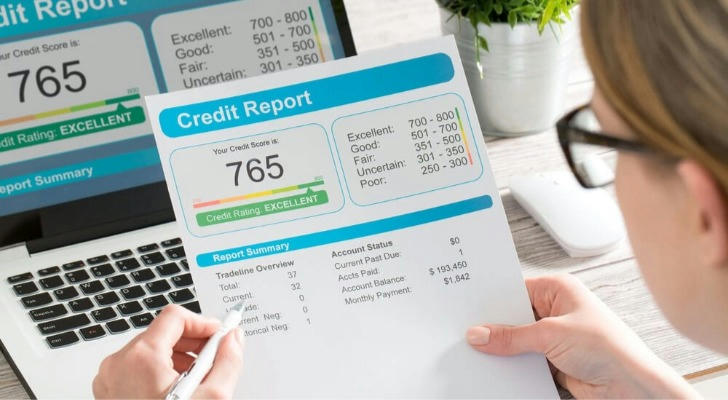How to Improve Your Credit Score in 90 Days
A credit score isn't just a number — it’s a reflection of financial behavior and discipline. Whether planning for a home, car, or major life shift, credit health plays a starring role. The good news? It’s possible to see noticeable improvements in just 90 days with focused actions and a bit of consistency.
📊 According to FICO, payment history and credit usage make up 65% of a credit score’s calculation. That means even small changes in these areas can trigger significant movement in the score.

Below is a practical, science-based breakdown of how to boost that three-digit number over the next three months.
⏳ Week 1–2: Start With a Deep Dive
🔍 1. Review the Credit Report
Before making any changes, it's important to know what lenders are seeing. A credit report shows open accounts, balances, missed payments, and any negative marks like collections or defaults.
🧠 Why this matters:
Errors are more common than most think. A study by the Federal Trade Commission found that one in five consumers had an error on at least one of their credit reports that could make them look riskier to lenders.
✔️ What to look for:
Duplicate accounts
Incorrect late payments
Fraudulent accounts
Outdated information
📌 Correcting errors doesn’t require financial moves — just attention to detail and persistence in filing disputes.

🔒 2. Freeze Unused or Risky Cards Temporarily
Limiting the temptation to spend on high-interest or nearly maxed-out cards helps prevent further harm. Even keeping a card open without using it can support the overall credit utilization ratio.
📈 Week 3–4: Tackle Credit Utilization
💡 3. Focus on Balances — Especially the Ratios
Credit utilization refers to the percentage of total credit being used compared to the available limit. Lower utilization equals better credit health.
📉 Goal: Keep utilization under 30% per card — ideally under 10% for faster impact.
🧮 Example: If a card has a $5,000 limit, the balance should stay below $1,500 to maintain good standing in the eyes of lenders.
📎 Spreading balances across multiple cards (without overusing any one) can also help stabilize utilization metrics.
⚙️ 4. Make Payments Strategically
Timing matters. Credit card companies report to bureaus at different times of the month — sometimes before the billing due date.
🕒 Smart move:
Pay down balances a few days before the statement closing date to reduce the reported debt.
This one tweak can lead to a visible change in score within a month, especially for those with high utilization.
🧾 Week 5–7: Clean Up the Payment History
🧯 5. Set Up Automatic Payments
Even one late payment can have a lasting impact, staying on the report for up to seven years. And payment history makes up the largest portion of the score calculation.
📅 Set it and forget it:
Automation ensures that no due date gets missed accidentally.
📉 A report by Experian shows that individuals with perfect payment histories tend to have scores over 100 points higher than those with just one late payment in the last year.
📬 6. Contact Lenders About Recent Late Payments
If a late payment occurred due to a temporary setback (like a job change or illness), a goodwill letter requesting its removal might work. Not guaranteed — but worth trying, especially for long-standing accounts in good shape otherwise.
🔗 Week 8–10: Strengthen Credit Profile
📂 7. Keep Older Accounts Open
The age of credit history influences about 15% of the credit score. Closing older accounts shortens the average age of credit and can cause a score dip.
📌 Even if a card isn’t being used, keeping it open — with no balance — helps bolster overall credit health.
🪪 8. Add Positive Tradelines (Carefully)
Some services allow the inclusion of utility or rent payments in credit reports. These aren't traditional credit lines, but they can enhance thin credit profiles with limited history.
🔎 Results vary, but for someone with few active accounts, this can add extra weight to the “on-time payment” category without new borrowing.
📉 Week 11–12: Stay the Course
🧘 9. Don’t Apply for New Credit (Unless Necessary)
New applications lead to hard inquiries, which can temporarily lower the score. Too many in a short span may signal financial distress to lenders.
🔐 Instead, focus on stabilizing the existing accounts. Consistency is what makes the changes stick.
📊 10. Monitor the Score Weekly (But Don’t Obsess)
Progress can be slow — credit scoring models update monthly, and not all lenders report on the same schedule.
📈 Watching the trend rather than each point helps build patience and persistence. Within 90 days, a noticeable boost is likely if balances drop, payments stay on time, and no new negative activity appears.
🧭 Final Word: It’s a Marathon, Not a Sprint
Improving credit in 90 days is realistic, but it depends on starting conditions. The biggest gains tend to come from reducing high credit usage and fixing past mistakes. For those with limited history, building a foundation may take longer — but every step counts.

Credit scores aren’t fixed identities. They're living reflections of behavior — and with a steady hand and a plan, the numbers move in the right direction.
